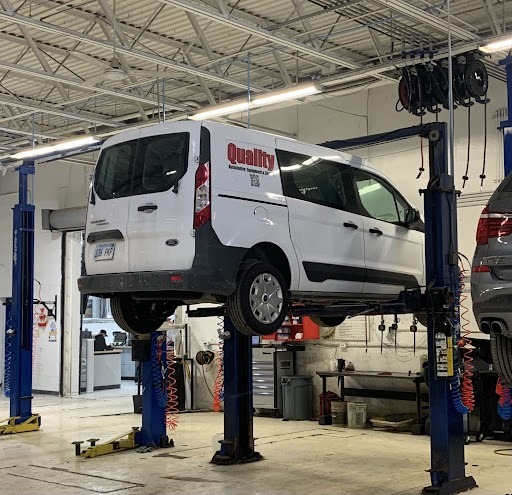Ensuring Automotive Lift Safety: A Comprehensive Guide
June 27, 2023
Share This Blog
SAFELY LIFT AUTOMOBILES PROPERLY
Equipment Selection:
Choosing the right automotive lift is the first step towards ensuring safety. Consider the weight capacity, lift type (two-post, four-post, scissor, mobile column, etc.), and compatibility with the vehicles you typically work on. Always opt for lifts that meet or exceed industry safety standards, such as those certified by recognized organizations like the Automotive Lift Institute (ALI).
Professional Installation:
To ensure proper functioning and safety, it is essential to have your automotive lift installed by qualified professionals. Expert installers will ensure that the lift is securely anchored to the floor, aligned correctly, and all components are properly connected. Following the manufacturer's instructions and guidelines is paramount during installation.
Routine Inspections and Maintenance:
Regular inspections and maintenance are crucial to keep automotive lifts in safe working condition. Create a comprehensive maintenance schedule that includes visual inspections, lubrication, and periodic check-ups by trained technicians. Pay attention to critical components such as cables, hydraulic systems, safety locks, concrete, and electrical connections. Any signs of wear, damage, or malfunction should be addressed immediately.
Operator Training and Certification:
Only trained and certified personnel should operate automotive lifts. Ensure that your technicians receive proper training on lift operation, safety protocols, emergency procedures, and load balancing techniques. Familiarize operators with the lift's manual, controls, and safety features to prevent accidents caused by operator error.
Load Capacity and Balance:
Exceeding the recommended load capacity is a dangerous practice that can lead to catastrophic failures. Always consult the lift's specifications to determine the maximum weight it can safely handle. Properly distribute the weight of the vehicle on the lift, ensuring the load is evenly balanced and secure. Avoid working on vehicles with unbalanced loads, as this can compromise stability.
Safety Measures During Operation:
Before using the lift, inspect the area for any potential hazards, such as loose objects or spills. Clear the workspace to provide a safe and clutter-free environment. Position the vehicle correctly on the lift, ensuring it is aligned with the designated lift points. Engage all safety mechanisms, such as safety locks and arm restraints, before lifting the vehicle. Regularly monitor the lift operation and immediately address any unusual noises, vibrations, or irregularities.
Emergency Preparedness:
Establish clear and effective emergency procedures in case of accidents or equipment failure. Make sure all operators are aware of the location of where circuit breakers might be located or where a disconnect might be if your models are equipped with them for emergency shut downs. Keep a fire extinguisher, first aid kit, and emergency contact numbers readily available. Conduct regular drills to practice emergency response scenarios and reinforce safety protocols.
Regular Safety Training and Communication:
Safety should be an ongoing priority in the automotive shop environment. Provide regular safety training sessions to keep operators up to date with the latest practices and technologies. Encourage open communication between team members regarding safety concerns, near-miss incidents, or potential hazards. Foster a safety-conscious culture where everyone feels empowered to raise safety issues and contribute to a safer workplace.
Summary:
By prioritizing automotive lift safety, you can significantly reduce the risk of accidents and create a secure working environment for your technicians. Proper equipment selection, professional installation, routine inspections, operator training, and adherence to safety protocols are essential steps in ensuring safe lift operations. Remember, a proactive approach to safety is the key to a successful and accident-free automotive repair shop.
Quality AES, and our certified ALI lift specialists, are qualified to help ensure that safety is at the forefront of any lift that we work on, install, or inspect. Quality AES can help your shop choose the best lift manufacturer and guide you into the best lifts that meet your car service demands. Whether we are designing a new floor space for your shop, installing new or replacing old equipment, providing routine safety inspections, or training your operators on lift operation, Quality AES prioritizes safety and accident prevention every time.
Here are a few of our lift services in greater depth:


